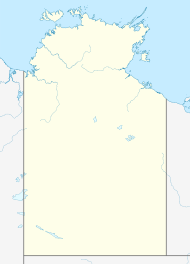Kaltukatjara facts for kids
Quick facts for kids Kaltukatjara (Docker River)Northern Territory |
|||||||||
|---|---|---|---|---|---|---|---|---|---|
| Population | 355 (2006 census) | ||||||||
| Established | 1968 | ||||||||
| Postcode(s) | 0872 | ||||||||
| Location |
|
||||||||
| LGA(s) | MacDonnell Region | ||||||||
| Territory electorate(s) | Namatjira | ||||||||
| Federal Division(s) | Lingiari | ||||||||
|
|||||||||
Kaltukatjara, also called Docker River, is a small, remote community in Australia's Northern Territory. It's located southwest of Alice Springs, close to the border with Western Australia. The town sits by a dry riverbed called Docker Creek, at the end of the Petermann Ranges.
In 2006, about 355 people lived in Kaltukatjara.
Contents
History of Kaltukatjara
A permanent town called Docker River was started in 1968. This helped reduce pressure on the Warburton community. It also allowed Aboriginal people to live closer to their traditional lands.
Naming the Area
The area now known as Kaltukatjara was first named Docker River by explorer Ernest Giles. He explored this region in 1872.
Early Plans for a Settlement
In the 1930s, pastors Duguid and Strehlow looked at the area. They wanted to see if a settlement could be built for the local people. However, they decided not to go ahead with it at that time.
During the 1930s and 1940s, Lutheran missionaries told the Pitjantjatjara people from Kaltukatjara to go to Areyonga. Areyonga was a smaller settlement connected to the Hermannsburg mission. There, they would receive food and clothing. Many Anangu (Aboriginal people) moved there by choice. But some chose to stay in the Petermann Ranges.
Establishing the Community
In the 1960s, the Anangu people from Areyonga really wanted to move back. They wished to return to the area around Docker River. With help from the government, a permanent settlement was built there in 1967-1968. Over 300 Anangu moved to start this new community.
In 1976, the Aboriginal Lands Rights (N.T.) Act was passed. This law gave the Anangu people in the region ownership of their traditional lands. This area covered about 44,970 square kilometres.
Recent Challenges
In 2009, wild camels became a big problem for the town. About 6,000 camels came into Kaltukatjara looking for water. Plans were made to manage the large number of animals.
Location and Climate
Kaltukatjara is located on the Tjukaruru Road. This road becomes the Great Central Road when it crosses into Western Australia. The border is just 7 kilometres to the west.
Weather in Kaltukatjara
The weather in Kaltukatjara is similar to the nearby Giles station in Western Australia.
- In January (summer), the average high temperature is about 37.2 degrees Celsius.
- In July (winter), the average high temperature is around 19.9 degrees Celsius.
- Overnight, the lowest temperatures range from 23.5 degrees in January to 6.8 degrees in June.
- The area gets about 284.2 millimetres of rain each year.
People and Culture
In 2001, the ABS Census showed that 297 people lived in Kaltukatjara. This was an increase from 277 people in 1997.
The people in Kaltukatjara mainly speak Pitjantjatjara and Ngaatjatjarra languages. Most of them identify as Anangu.
The 2001 Census also found something interesting. Kaltukatjara had the second highest number of people working in health and community services. About 26.3% of its population worked in these areas. Only Kintore, a community to the north, had a higher percentage.
Community Facilities
Kaltukatjara has several important facilities for its residents.
Water and Power
Water for the community comes from three underground bores (wells). There are also three ground tanks and one raised tank for storing water. The water quality is very good.
The community has a sewerage system. Some houses also have their own septic tanks. Electricity is provided by three diesel power generators.
Roads and Services
The roads within the town are sealed (paved). However, the main road leading to the community, Petermann Road, is unsealed.
As of 2022, Kaltukatjara has an airstrip. This airstrip was paved by 2017, along with the road leading to it. The community also has:
- A general store where you can buy petrol.
- The Tjarlirli Art centre and gallery.
- A recreation hall for community events.
- An aged care facility for older residents.
- A health centre.
- A school.
- Two public telephones.
- An Australian Rules football oval.
- A basketball court.
There is also a Lutheran church with a pastor. It is part of the Lutheran Church's Finke River Mission.
See also
 In Spanish: Kaltukatjara para niños
In Spanish: Kaltukatjara para niños


